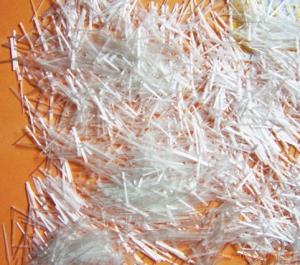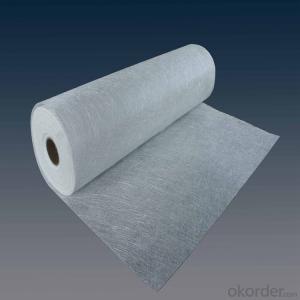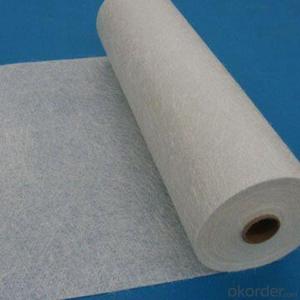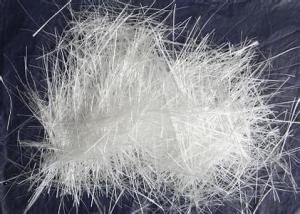E-Glass Fiber Chopped Strands For Thermoplastics
- Loading Port:
- China Main Port
- Payment Terms:
- TT or L/C
- Min Order Qty:
- 1 ton kg
- Supply Capability:
- 500 Tons Per Month kg/month
OKorder Service Pledge
OKorder Financial Service
You Might Also Like
Introduction of E-Glass Fiber Chopped Strands For Thermoplastics
E-Glass Chopped Strands for Thermoplastics is designed for extrusion and injection molding processes,widely used in automotive, electric appliance,and home appliance
Product Features of E-Glass Fiber Chopped Strands For Thermoplastics
1.Excellent strand intergrity,low static,low fuzz,and good flowability.
2.Good bonding with resins,insuring excellent surface appearance
3.Excellent mechanical properties
Packaging of E-Glass Fiber Chopped Strands For Thermoplastics
The product can be packed in bulk bags, heavy-duty box and composite plastic woven bags;
For example:Bulk bags can hold 900kg-1000kg each;Cardboard boxes and composite plastic woven bags can hold 15kg-25kg each.
Storage of E-Glass Fiber Chopped Strands For Thermoplastics
Unless otherwise specified, fiberglass products should be stored in a dry, cool and rain-proof area. It is recommended that the room temperature and humidity should be always maintained at 15ć-35ćand 35%-65% respectively.
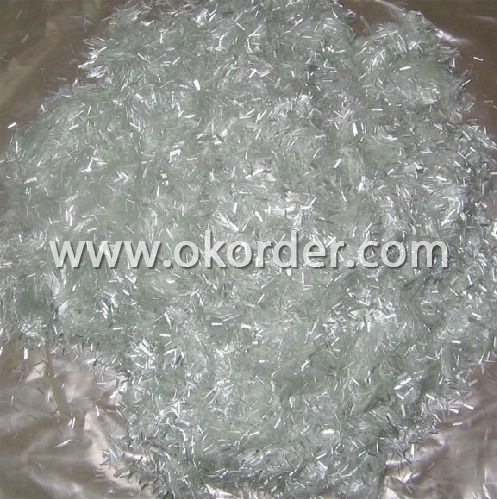
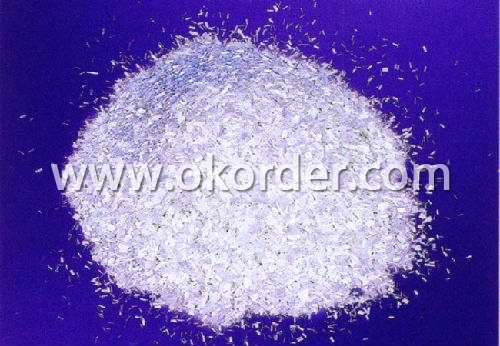
- Q:Is fiberglass chopped strand suitable for aerospace structural applications?
- Fiberglass chopped strand, a reinforcement material comprised of small strands of fiberglass, proves to be fitting for aerospace structural applications. Its remarkable features include a high strength-to-weight ratio, exceptional mechanical properties, and resistance to corrosion and chemicals. Consequently, this material is suitable for aerospace structural applications that necessitate lightweight yet sturdy materials. Moreover, fiberglass chopped strand's adaptability to intricate shapes enables its versatility in various aerospace components. Nevertheless, it is crucial to acknowledge that aerospace applications may entail distinct requirements and regulations. Therefore, thorough testing and certification must be undertaken to ascertain the appropriateness of fiberglass chopped strand for a specific aerospace structural application.
- Q:Can fiberglass chopped strand be used in water slides?
- Yes, fiberglass chopped strand can be used in water slides. Fiberglass is a popular material choice for water slides due to its strength, durability, and resistance to water damage. Chopped strand refers to small strands of fiberglass that are cut into shorter lengths, making it easier to handle and incorporate into the manufacturing process. These chopped strands can be mixed with resin and other materials to create a composite that is then molded into the desired shape of the water slide. The resulting fiberglass composite is able to withstand the constant exposure to water, provide structural integrity, and ensure a smooth and enjoyable ride for water slide enthusiasts.
- Q:What is electroplate glass fiber cloth
- Leather, silicone, plating, red twill, the largest area can produce 1000mm * 500mm carbon fiber board (color carbon fiber board)
- Q:Can fiberglass chopped strand be used in the production of wind turbine nacelles?
- Yes, fiberglass chopped strand can be used in the production of wind turbine nacelles. Fiberglass chopped strand is commonly used as a reinforcement material in composite manufacturing processes. The nacelle of a wind turbine is typically made from a composite material, which consists of a combination of fiberglass and resin. The fiberglass chopped strand is added to the resin matrix to enhance the mechanical properties and provide strength and durability to the nacelle. It helps to improve the overall structural integrity and stability of the wind turbine nacelle, making it suitable for withstanding the harsh conditions and load demands of wind turbine operation. Additionally, fiberglass chopped strand is lightweight and corrosion-resistant, which are desirable characteristics for wind turbine applications. Therefore, it is a commonly used material in the production of wind turbine nacelles.
- Q:What are the UV resistance properties of fiberglass chopped strand?
- Fiberglass chopped strand is known for its good resistance to UV radiation. The glass fibers used in its production are derived from silica, which naturally has UV resistance. Furthermore, manufacturers often apply a UV-resistant coating or finish on the surface of the chopped strand. This additional layer enhances its ability to endure prolonged exposure to sunlight and prevents the degradation of the fiberglass material over time. However, it should be noted that the level of UV resistance can vary depending on the specific type and quality of fiberglass chopped strand. Therefore, it is recommended to consult with the manufacturer or supplier to ensure that the product meets the necessary UV resistance requirements for a particular application.
- Q:How does the adhesion of the chopped strand affect its performance?
- The adhesion of the chopped strand plays a crucial role in determining its performance. The adhesion refers to the bond strength between the individual glass fibers and the matrix material in a composite material. A strong adhesion between the chopped strand and the matrix material is advantageous for several reasons. Firstly, it ensures effective load transfer between the fibers and the matrix, leading to improved mechanical properties such as tensile strength, flexural strength, and impact resistance. The load transfer is essential because the fibers are responsible for carrying the majority of the load in a composite material. A weak adhesion could result in poor load transfer, leading to lower overall performance. Secondly, a strong adhesion helps in preventing fiber pull-out. Fiber pull-out occurs when the fibers are not firmly bonded to the matrix and are pulled out during loading, reducing the efficiency of the composite material. With a good adhesion, the fibers remain embedded in the matrix, providing continuous reinforcement and enhancing the overall strength of the material. Furthermore, a strong adhesion also improves the resistance of the composite material to environmental factors such as moisture and temperature. A weak adhesion can lead to reduced resistance to these factors, resulting in degradation and reduced performance over time. In summary, the adhesion of the chopped strand significantly affects its performance. A strong adhesion ensures effective load transfer, prevents fiber pull-out, and enhances resistance to environmental factors, ultimately leading to improved mechanical properties and durability of the composite material.
- Q:What is the difference between E-glass and S-glass chopped strands?
- E-glass and S-glass chopped strands are types of fiberglass materials utilized in various applications. Nevertheless, there are notable distinctions between them. 1. Composition: E-glass, an abbreviation for "electrical" glass, consists of alkali-lime glass. It contains a substantial amount of silica (approximately 52-56%) alongside alumina, calcium oxide, and other oxides. Conversely, S-glass, known as "structural" glass, is made up of a highly pure form of silica (around 65-70%), magnesia, and alumina. 2. Strength and Stiffness: In comparison to E-glass, S-glass possesses higher tensile strength and modulus of elasticity. It is recognized for its exceptional mechanical properties, rendering it suitable for high-performance applications that demand superior strength and stiffness. 3. Chemical Resistance: Due to its elevated silica content, S-glass demonstrates improved resistance against chemical attack when compared to E-glass. It can withstand exposure to acids, alkalis, and other corrosive substances more effectively. 4. Electrical Properties: E-glass is specifically engineered for its electrical insulation capabilities. It has a lower dielectric constant and higher dielectric strength, making it an ideal choice for applications where electrical insulation is crucial. Conversely, S-glass is not typically utilized for electrical purposes. 5. Cost: Generally, E-glass chopped strands are more economically viable in comparison to S-glass. The higher silica content and superior mechanical properties of S-glass contribute to its increased cost. To summarize, although both E-glass and S-glass chopped strands belong to the fiberglass category, S-glass offers greater strength, stiffness, chemical resistance, and superior electrical insulation properties. However, E-glass is more affordable, making it suitable for applications where extreme mechanical properties are not necessary. The choice between the two depends on the specific requirements and budget of the application.
- Q:What are the chemical compatibility properties of fiberglass chopped strand?
- Fiberglass chopped strand is a versatile material with excellent chemical compatibility properties. It is highly resistant to most chemicals and provides a reliable barrier against corrosion and degradation. Fiberglass chopped strand is inert to a wide range of acids, alkalis, and solvents, making it suitable for use in various industrial applications. It can withstand exposure to common chemicals such as hydrochloric acid, sulfuric acid, sodium hydroxide, and many organic solvents. Additionally, fiberglass chopped strand is highly resistant to water and moisture, which further enhances its chemical compatibility. It does not absorb water or swell, ensuring its structural integrity even when exposed to humid or wet environments. The chemical compatibility of fiberglass chopped strand also extends to its resistance to UV radiation and weathering. It does not degrade or discolor when exposed to sunlight or extreme weather conditions, making it a durable option for outdoor applications. Overall, the chemical compatibility properties of fiberglass chopped strand make it a reliable and durable material that can withstand a wide range of chemicals and environmental conditions.
- Q:What are the different surface treatments available for fiberglass chopped strand?
- To enhance the performance and compatibility of fiberglass chopped strand with different materials, there are several surface treatments available. Some commonly used surface treatments include: 1. Silane treatment: Widely employed, this treatment involves applying a silane coupling agent onto the strand's surface. By improving adhesion between fiberglass and the matrix material, silane treatment enhances mechanical properties and durability of the composite. 2. Sizing treatment: Another method is applying a protective coating, known as sizing, to the fiberglass strands. Sizing agents consist of lubricants, binders, and additives, which protect the fibers during processing, improve wettability, and enhance compatibility with various resin systems. 3. Plasma treatment: This treatment exposes the fiberglass chopped strand to high-energy plasma gas. It modifies the fiber surface by cleaning and activating it, resulting in improved adhesion and wetting characteristics. Plasma treatment is often used for demanding applications. 4. Chemical treatment: Various chemical treatments can be applied to modify the surface of fiberglass chopped strand. For instance, acid treatment increases surface roughness and removes impurities, while alkali treatment enhances moisture and alkali resistance. 5. Coating treatment: Coating treatments involve applying a thin layer of coating onto the fiberglass strand's surface. These coatings can be made of polymers, metals, or ceramics. They provide additional protection against abrasion, UV degradation, or chemical attack, and improve compatibility with specific resin systems. In conclusion, the choice of surface treatment for fiberglass chopped strand depends on specific application requirements and desired composite properties. Selecting the appropriate treatment is crucial in optimizing composite performance and durability.
- Q:Does fiberglass chopped strand improve the chemical resistance of composite materials?
- Yes, fiberglass chopped strand can improve the chemical resistance of composite materials. The addition of fiberglass chopped strand to composite materials enhances their resistance to a wide range of chemicals, making them more durable and suitable for various applications in different industries.
1. Manufacturer Overview |
|
|---|---|
| Location | Zhejiang, China |
| Year Established | 1969 |
| Annual Output Value | Above US$ 150 Million |
| Main Markets | overseas companies in Hongkong, Canada, South Africa, South Korea, India, Italy, Singapore, France and many other countries and regions. |
| Company Certifications | ISO9001;ISO14001 |
2. Manufacturer Certificates |
|
|---|---|
| a) Certification Name | |
| Range | |
| Reference | |
| Validity Period | |
3. Manufacturer Capability |
|
|---|---|
| a)Trade Capacity | |
| Nearest Port | Shanghai |
| Export Percentage | 40%-50% |
| No.of Employees in Trade Department | 21-50 People |
| Language Spoken: | English |
| b)Factory Information | |
| Factory Size: | Above 5000,000 square meters |
| No. of Production Lines | Above 5 |
| Contract Manufacturing | |
| Product Price Range | Average |
Send your message to us
E-Glass Fiber Chopped Strands For Thermoplastics
- Loading Port:
- China Main Port
- Payment Terms:
- TT or L/C
- Min Order Qty:
- 1 ton kg
- Supply Capability:
- 500 Tons Per Month kg/month
OKorder Service Pledge
OKorder Financial Service
Similar products
New products
Hot products
Related keywords
